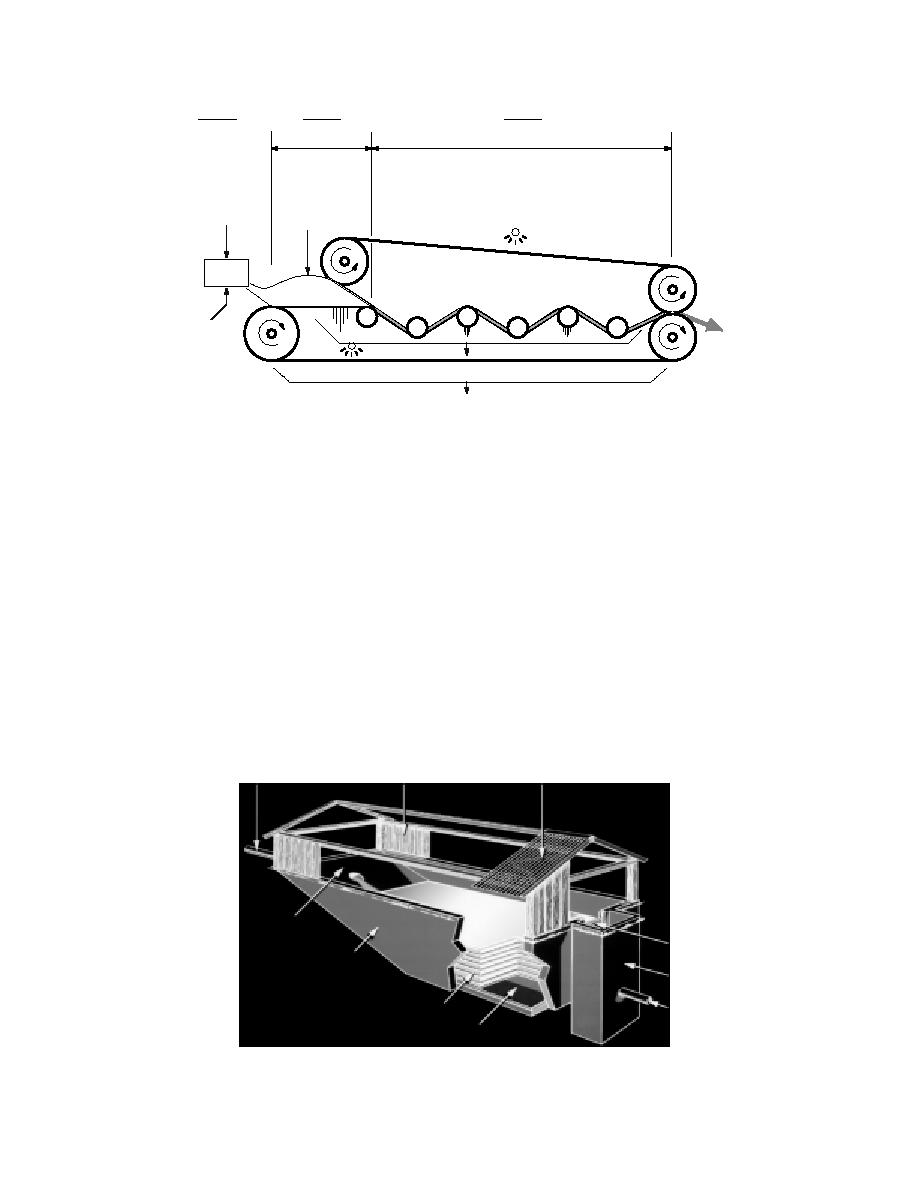
Stage 1
Stage 2
Stage 3
Chemical
Gravity
Shear and Compression
Conditioning
Dewatering
Conditioned
Sludge
Sludge
Wash Spray
Sludge
Polymer
Mixer
Polymer
Solution
Dewatered
Wash Spray
Filtrate
Sludge
Cake
Wash Water
Figure 1. Schematic of belt filter press.
tion. Aerobic digestion is proposed for sludge stabili-
plant. A preliminary design is developed here that is
zation followed by a belt filter press for dewatering. In
based on average climatic data at McMurdo and the
this analysis, I assumed that all components of a treat-
sludge quantities reported by CTE (1999).
ment system would be the same except that a freezing
bed would used instead of a belt filter press. The vol-
DESIGN CRITERIA
ume of sludge that needs dewatering is projected to be
178 m3 (47,000 gal.) annually.
Currently, wastewater generated at McMurdo only
receives maceration (grinding) prior to being dis-
The horizontal dimensions of a freezing bed depend
charged into McMurdo Sound. Although it is not re-
on the depth of sludge that can be frozen and thawed
quired by treaty, the goal of NSF is to provide a level
at the proposed site and the volume of sludge to be
of wastewater treatment consistent with the 1972 Clean
processed. The depth of sludge that can be frozen and
Water Act. To achieve this goal, a secondary treatment
thawed depends on the climatic conditions at the site.
plant will be required.
The monthly average air temperatures and insolation
CTE Engineers evaluated several secondary treat-
at McMurdo Station can be found in Table 1. These
ment alternatives and recommended extended aeration
data show that the average temperature is below freez-
followed by low pressure ultraviolet (UV) disinfec-
ing during each month. Consequently, freezing sludge
Incoming Sludge Pipe
Louvered Sides
Transparent Roof
Vehicle Access Ramp
Overflow
Weir
In-Ground Concrete Tank
Sump
Overflow
and Filtrate
Frozen Sludge Layers
Return Pipe
Sand Bottom
Figure 2. Conceptual drawing of freezing bed.
2



 Previous Page
Previous Page
